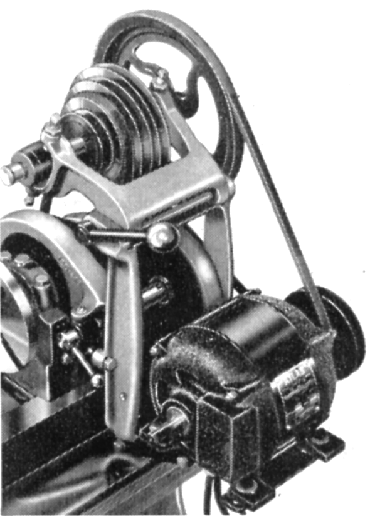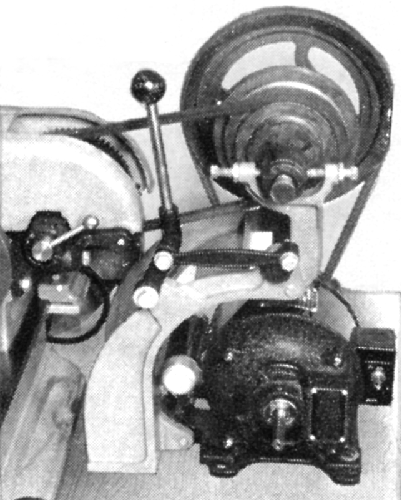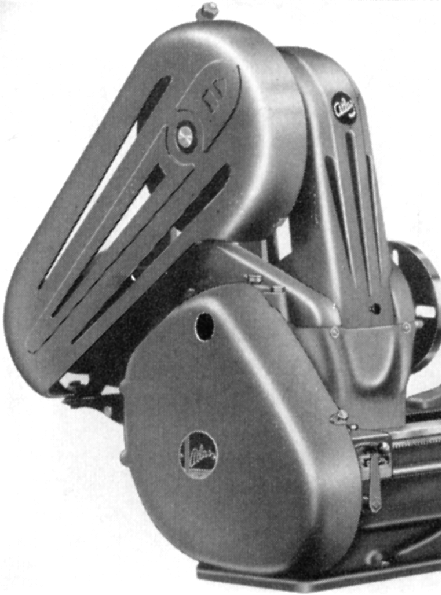|
Countershafts could be had in both "V" for vertical and "H" for horizontal" models. As offered in standard form the vertical type was not fitted with a belt-run guard (but individual guards were fitted to the backgears above, left) whilst the horizontal type (above, right and below) leant itself more readily to a simple guard that covered just the front run of the headstock belt (below).
An all-enveloping "safety" enclosure that appealed to schools and other training establishments was available for both the vertical and horizontal countershafts.
The method of containing and aligning the countershaft's "Hyatt" needle roller bearings (held in cast-iron housings) was simple, ingenious and inexpensive to manufacture; each was held against two adjuster screws that socketed into shallow dimples placed 180° apart on their outside surface. Because the bearings were free to swivel they automatically took up a free-running position and it was then a relatively simple matter, using a steel straight edge, to make fine adjustments (to the screws) in order to get the countershaft pulley lined up exactly with that on the headstock.
The countershafts on the similar lathes branded Craftsman and sold by for Sears used Oilite bearing. These widely-used and still very common bearings must be lubricated with oil, not grease, as the Oilite material is a form of sintered bronze and saturated with oil during manufacture. As the shaft turns the assembly warms up and the oil becomes free to lubricate the shaft. After use, and the bearing cools and the oil is partially reabsorbed; although intended to be maintenance-free, it is necessary to apply a little light oil occasionally to replace that lost through evaporation where it seeps from the (usually) unsealed bearing ends.
|
|





